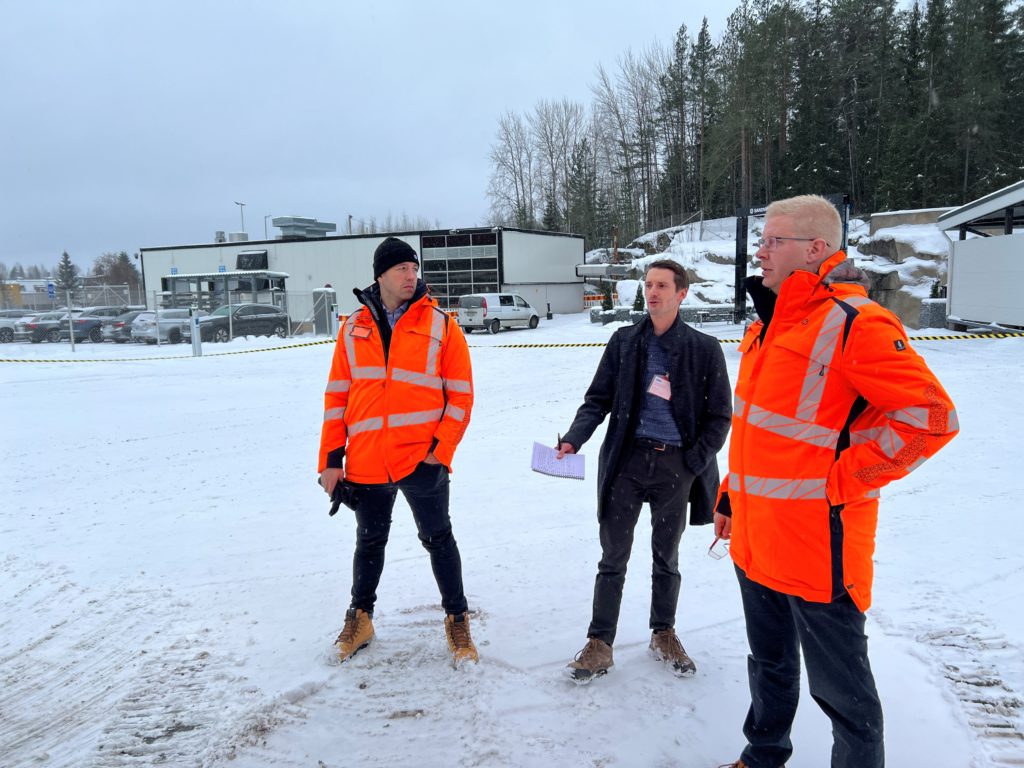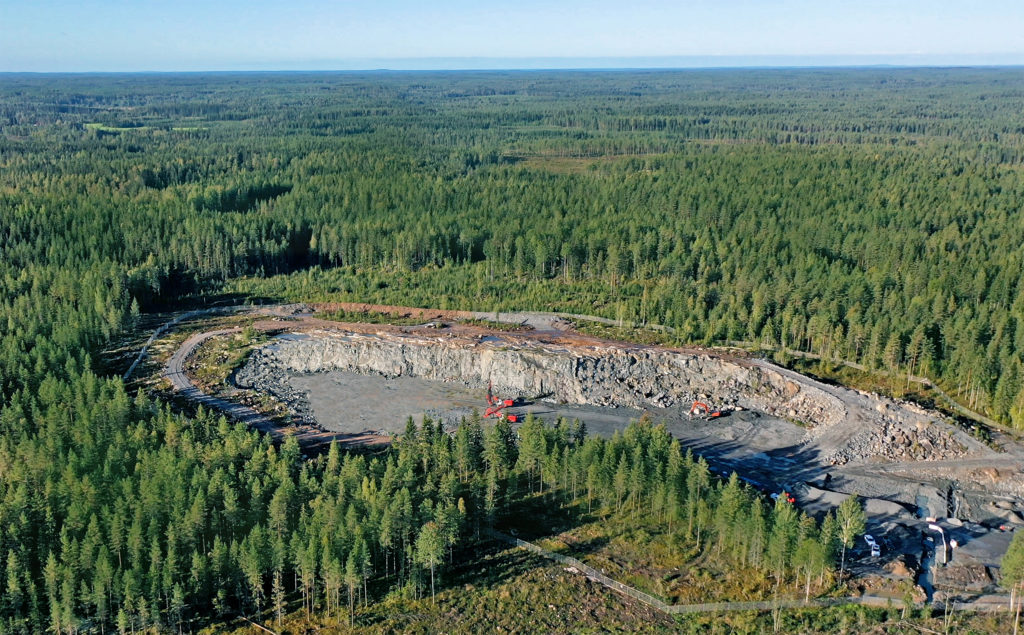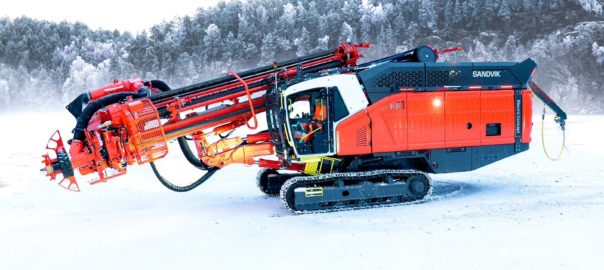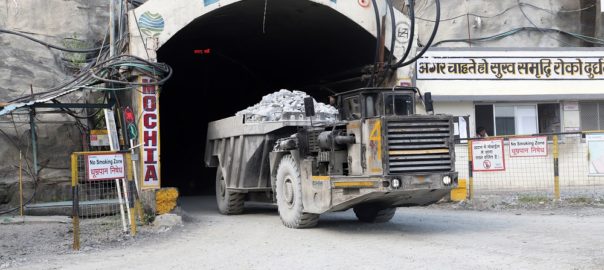“We are showing what technology can do today.”
These were the words Mats Eriksson, President of Sandvik Mining and Rock Solutions, during the Capital Markets Day in Tampere, Finland, last week when describing the launch of Sandvik’s latest battery-electric concept surface drill rig.
This rig is representative of more than just technological advances in the mining industry, also acting as a tangible example of Sandvik’s efforts to become a leader in the surface drilling space.
It has been four years since Sandvik announced this ambition, with the company having made significant headway on achieving this goal.
Sandvik doubled its order intake for rotary drills from 2019 to 2022. Over this three-year period, the company launched the Leopard™ DI650i down-the-hole (DTH) drill rig to support fully autonomous drilling operations and went on to capture major autonomous drilling contracts in Latin America, Australia and Finland.
The OEM is looking to at least double its surface mining revenue from 2022 to 2028. Key contracts in 2023 from Boliden and MACA have already provided early positive momentum towards such a goal.
There is potential for Sandvik to steal a march on its competitors in this space – companies who have already been able to automate the largest blasthole drills in key markets in the Americas and Australia – by leveraging the electrification expertise it has built up underground.
This was highlighted by Eriksson last week and was reiterated further when IM spoke to the company’s experts in Tampere in front of the second battery-electric surface concept rig.
The concept vehicle is the first in its size class, capable of drilling DTH holes up to 229 mm in diameter and blending the autonomy of battery with the continuous endurance of power cable, Sandvik says.

Flexibility and optionality are the name of the game, with the rig equipped with a battery able to carry out seven hours of tramming or one hour of drilling based on Sandvik research, plus plug into electrical infrastructure with a 37-mm diameter, 180-m-long tethered cable.
Lauri Laihanen, Vice President, R&D, Surface Drilling Division, Sandvik Mining and Rock Solutions, told IM at the Sandvik Capital Markets Day event last week: “The main benefit of this battery-electric solution is the ability to tram independently for up to seven hours.
“When you need to move the rig after drilling a certain portion of the pit ahead of blasting, you can disconnect the cable and tram the rig away from the pit independently without worrying about managing the cable logistics. Then, when you have carried out the blasting and explosives loading process and are ready for the next drilling sequence, you can tram back without recharging in between.”
Petri Virrankoski, President of the Surface Drilling Division, added: “The application where these drills are used is somewhat different to rotary drills. To a degree, they are used in production drilling, but in a very dynamic way – carrying out pre-splits or blasthole patterns on smaller benches, for example.
“They need to manoeuvre around more, so there are more demands placed on them from a flexibility and cable management perspective.”
There are other potential benefits Laihanen talks up – the ability to carry on drilling or tramming during “black outs” and, on mine sites where cable-electric equipment is already used, connect the rig to the grid after diesel-electric blasthole drills and cable shovels have started up (to avoid power surges).
“For some of our frontrunner customers that have already adopted electrification on surface and have the infrastructure in place, they would only need to add one transformer to lower the voltage level from what their larger pieces of equipment are working off to start using this rig for drilling and tramming,” he added.
This type of talk – more practical than conceptual – is representative of Sandvik ‘making the shift’ when it comes to electrification in surface mining.
It has only been just over a year since the company unveiled its first electric concept rig, based off a much smaller top hammer drill rig meant for urban construction, but the understanding of what it may take to electrify these large rigs has grown tremendously.
“From a technology development and demonstration point of view, it is crucial to understand the framework that you have from the lower and upper end of the drilling portfolio,” Laihanen said. “This helps you track it with the customer base and finalise your productisation plan to hit that 2030 goal of having an electrified offering for the whole range.”
Eriksson says the company is confident in being able to offer electric surface drilling products across its range by 2030, with Sandvik’s continued advances in underground mine electrification spurring this on.
It is worth, therefore, noting some of the numbers that came out of the Capital Markets Day from the underground load and haul division.
Brian Huff, Vice President of New Technologies for the Load and Haul Division within Sandvik Mining and Rock Solutions, said the company had won more than 75% of the tenders it had been involved in from January-October this year, with more than 15% of the company’s load and haul order intake over this period representing battery-electric equipment.
One can also add sales of the company’s underground battery-electric drills, which started to be offered to the market from 2016, to these numbers.
The company’s Test Mine in Tampere, which IM visited last week, has played a key role in this growing Sandvik underground battery-electric population, and the recent announcement that Sandvik will look to replicate this on surface with the Sandvik Test Pit – some 40 km away – is another indicator of how serious the company is about becoming an open-pit drilling major.
Virrankoski explained: “If you look at the peak capabilities that have enabled us the successes underground, one of these is the Test Mine. This has been helpful for testing and developing not only the drill rigs, but also tooling, digital tools, automation, rock drills, etc.
“It became pretty clear about four years ago that we needed a similar capability for surface.”
This location just outside of Tampere was chosen due to the “good rock” availability, the ability to offer significant scale where the company could test out all boom and rotary drill rigs up to the DR413 class at the same time as providing customer showcases both on electrification and automation, the ability to cross-fertilise underground learnings from the existing Test Mine with surface drilling developments, and the continued development of existing and new Sandvik surface mining engineers.

The company already has multiple rigs, both boom and rotary, at the site – which is still being setup for testing – with the new electric concept rig expected to soon join it.
“The next action after that is to begin customer trials next year,” Laihanen said. “We have had preliminary discussions with several customers, but we need to finalise our own internal development testing before locking in these trials.”
This is indicative of the emphasis the company is placing on surface mining and the opportunity it has to shape the battery-electric conversation in the surface drilling space.
“For us, it is important to have a physical specimen to have these conversations with customers,” Laihanen said. “When you have something available, it makes the conversation around capabilities and limitations a lot easier, taking these discussions to a whole new level.”
Virrankoski added: “This will lead to a conversation around maintenance processes, the skills requirements, the service models, etc.
“Having a machine that can play in a real-life sandbox is very different to showing a model on a screen.”
Sandvik has laid its surface drilling marker down. The market will now decide if this is the direction it wants to move in.








